The Sony Ericsson Xperia Play: Where Do You Want To Take Your Gaming Today?
by Brian Dipert on August 8, 2011 1:26 PM EST- Posted in
- Smartphones
- Sony
- Android
- Xperia Play
- Mobile
After deciding whether or not I'll be able to comfortably tote a cellular handset around in my blue jeans, my next evaluation step is to test its reception capabilities...because, after all, it's first and foremost a phone. Up front, I should note that I was reliably able to notably degrade the Xperia Play's received signal strength by holding it in either hand with my fingers pressed against the bottom half of one side and my palm aligned in the same location on the other side, in a natural hand-holding position:
In my upstairs bedroom, for example, the Xperia Play read -81 dBm when I wasn't touching it, but -91 dBm or worse when I held it as shown above. Stronger-reception environments may not experience the same degree of degradation (or, for that matter, dropped-call outcome) and, as is already well documented at this point, my iPhone 4 has its own 'Antennagate' issues. The previously mentioned gel case neatly addresses the iPhone 4's design shortcomings, and I suspect that the same would be the case (pun intended) for the Xperia Play.
All of the measurements that follow were taken, therefore, with the mobile phones not in my hand. I'm based in Truckee, CA, a small town in the northwest corner of Lake Tahoe that's blessed with an atypically robust telecommunications infrastructure courtesy of the large number of Silicon Valley residents who own vacation homes in the area. The Xperia Play I'm reviewing is a Verizon model, and Verizon happens to have the most robust coverage here of any of the four carriers. AT&T coverage is somewhat weaker, and I've therefore supplemented it with a Wi-Ex zBoost YX510-PCS-CEL cellular booster.
The YX510-PCS-CEL is a dual-band model that also comprehends Verizon's voice and data frequencies, so I've provided internal measurements both with it on and off. And for comparison sake, I've also listed the received signal strength measured by my Verizon-tailored iPhone 4, which I've jailbroken and from which I've therefore obtain dBm measurements courtesy of a SBSettings switch (although labeled as being exclusively for 'GSM' use, it works equally well for CDMA):
| Comparative Reception | ||||||
| Xperia Play | iPhone 4 | |||||
| Interior: upstairs bedroom (booster on) | -81 dBm | -78 dBm | ||||
| Interior: upstairs bedroom (booster off) | -81 dBm | -78 dBm | ||||
| Interior: downstairs living room (booster on) | -75 dBm | -74 dBm | ||||
| Interior: downstairs living room (booster off) | -75 dBm | -74 dBm | ||||
| Exterior: front deck | -59* dBm | -63 dBm | ||||
A few comments; first off, the YX510-PCS-CEL (whose retransmit antenna is also located in the downstairs living room) clearly doesn't seem to be having any positive Verizon reception effect, at least in the test locations I chose! Premium cellular boosters are intentionally designed to disable their amplification effects whenever the ambient signal is already sufficiently high, so perhaps this explains what I'm seeing (or more accurately, not seeing). And when measuring reception outdoors, I initially placed the Xperia Play to the right of and a couple of inches away from the iPhone 4 on the deck railing, wherein I received a -56 dBm result on the Sony Ericsson handset.
Since this result was notably divergent from what I'd gotten inside, I decided to swap the locations of the two handsets...wherein the Xperia Play reported -62 dBm of signal strength! Therefore, I averaged the two results for the asterisk'd -59 dBm number you'll find in the above table. This situation exemplifies the Achilles Heel of any testing of this nature, since results are dependent not only on handset location but also the presence or absence of any ambient degraders (close-proximity spectrum broadcasters, weather effects, intermediary walls and other attenuators, etc). In contrast, by the way, the iPhone 4 delivered consistent -63 dBm data in both locations.
With respect to phone functions, the Xperia Play was passable albeit not spectacular. Volume from the conventional speaker and speakerphone was sufficient for all but the highest ambient noise environments. Folks on the other end of the connection almost always claimed that they could hear me clearly, although I would have preferred that Sony Ericsson include a multi-microphone array for ambient noise suppression purposes, either done in software (aka Motorola Droid) or silicon (Nexus One and iPhone 4, via an Audience audio processor).
And regarding data transfer speeds, I returned to the front deck and captured a few screenshots of the Xperia Play running Ookla's Speedtest.net application:
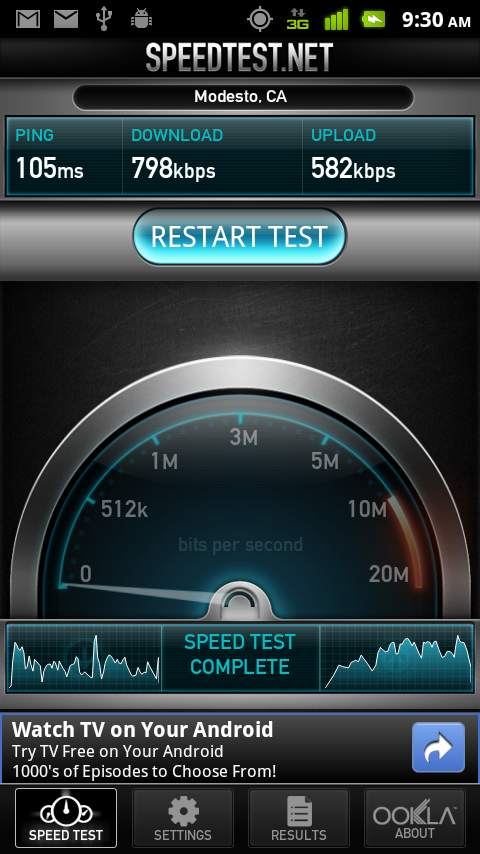
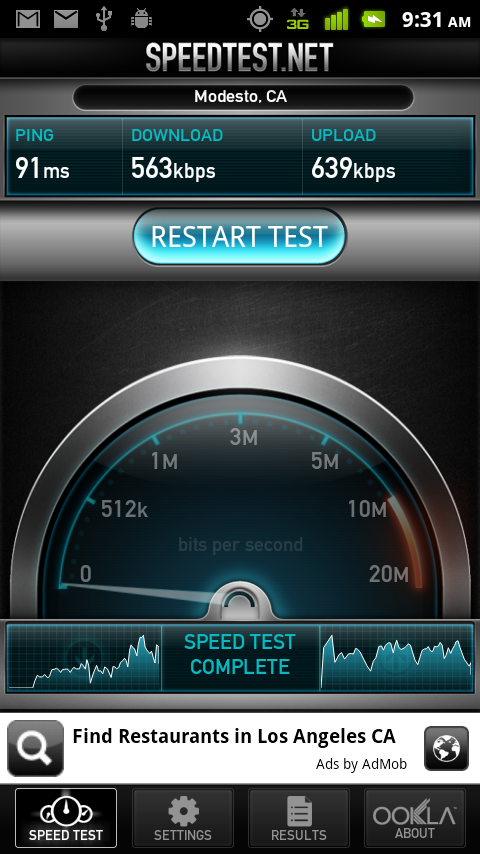
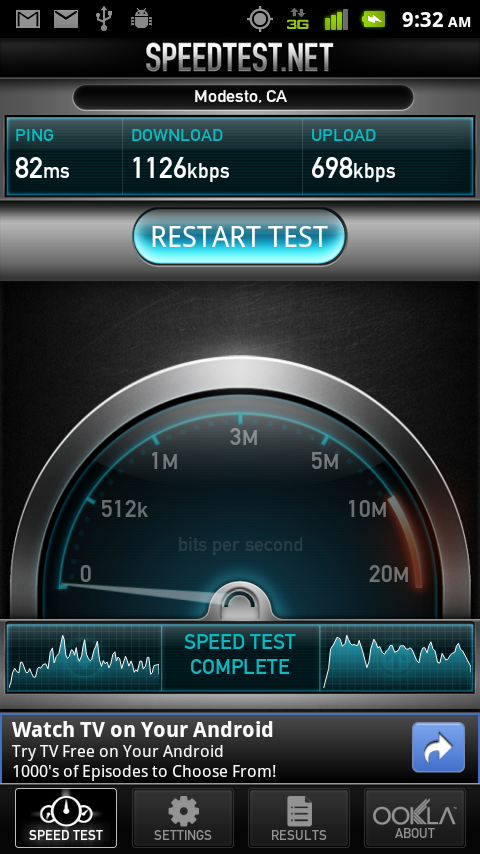
The Xperia Play advertises itself as being compatible not only with the older EV-DO Rev. 0 standard but also the newer, faster Rev. A approach. Based on the data above coupled with my prior experiences with CDMA cellular data-cognizant devices, I'm inclined to believe Sony Ericsson. The randomness of the results is somewhat intriguing; I presume it reflects a time-varying network load on whatever cell tower I happened to be connected to at the time. But considering that I saw peak download speeds of over 1.5 Mbps, for example, I'm confident in the Xperia Play's EV-DO Rev. A capabilities. For comparison's sake, here are some sequential screenshots of Speedtest.net running on my Verizon iPhone 4:


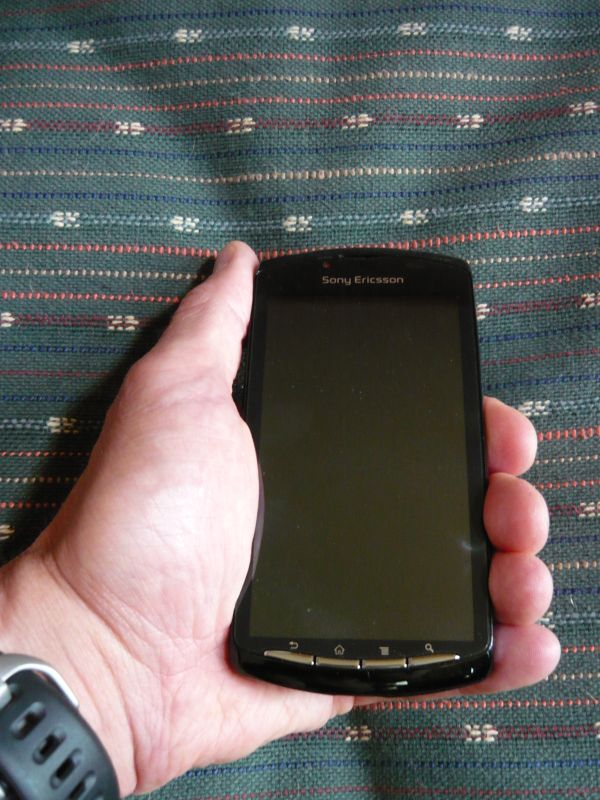
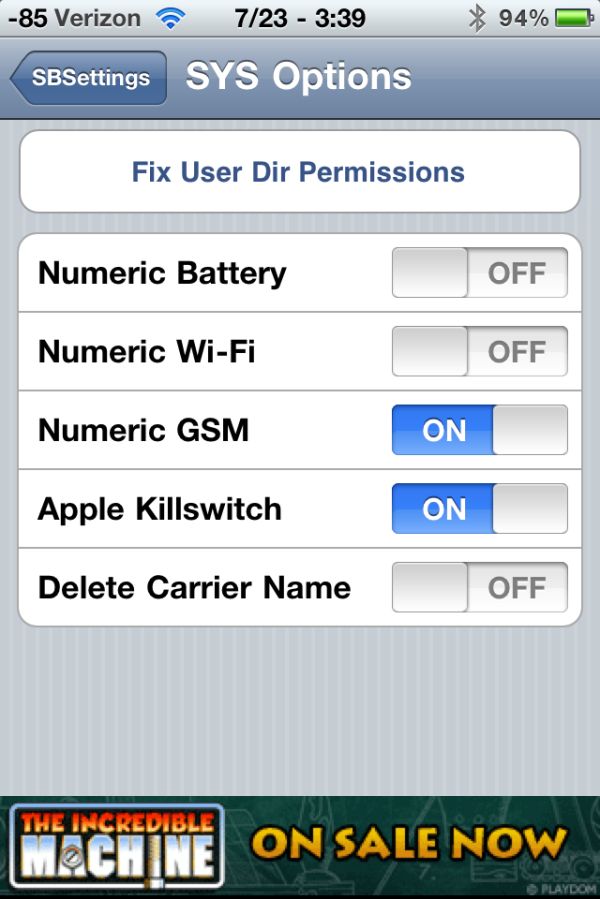
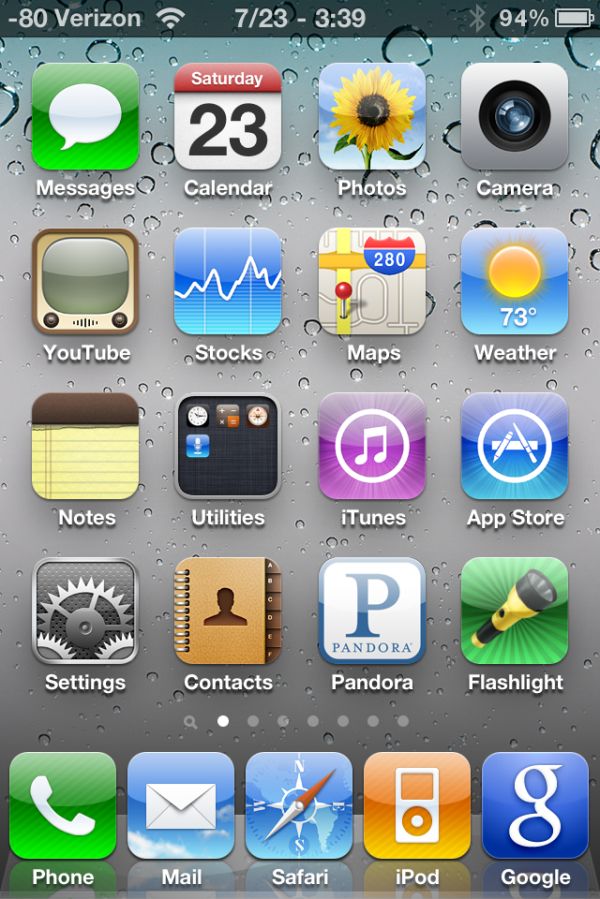
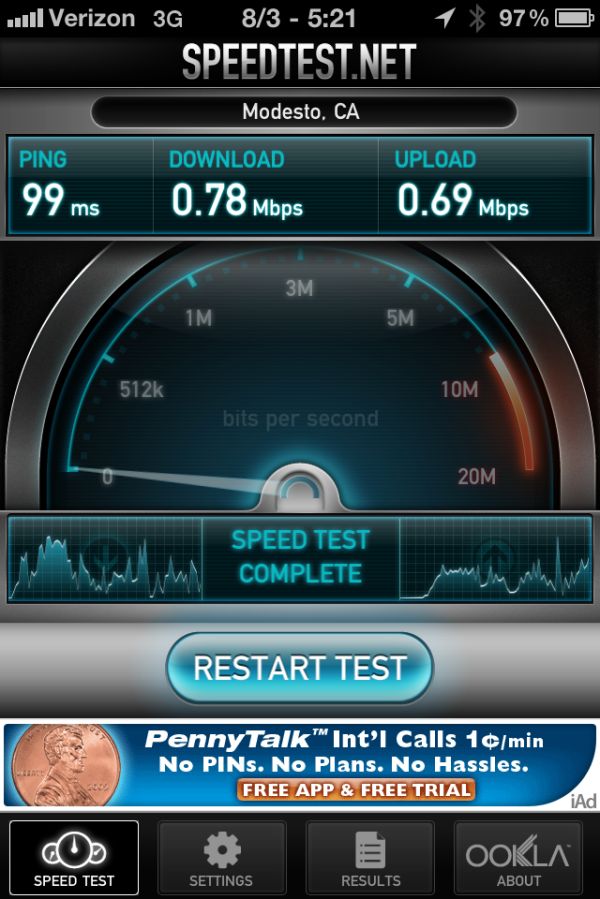
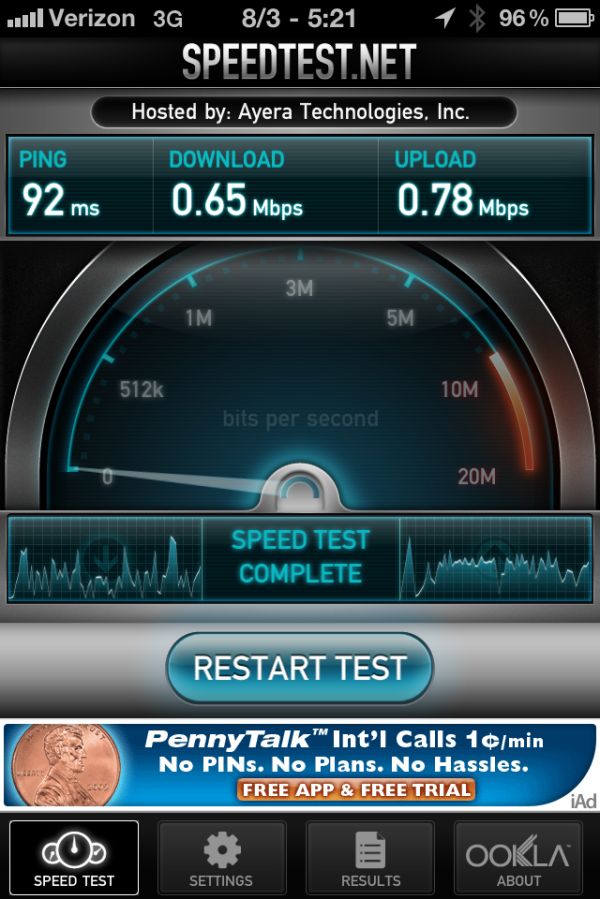
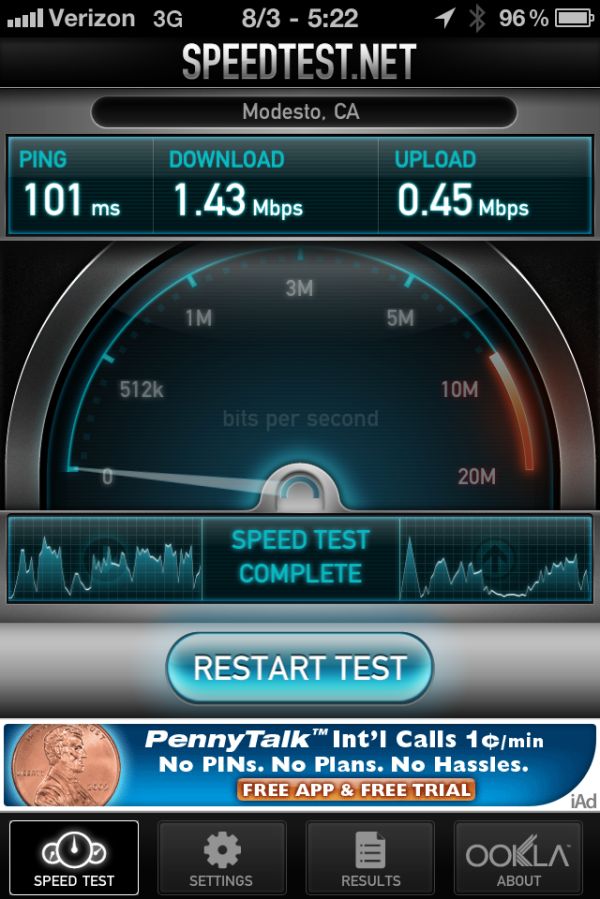








34 Comments
View All Comments
RoninX - Wednesday, August 10, 2011 - link
Maybe they should just release a 3G/4G version of the Vita that makes calls.Then you would get by far the best portable gaming experience without having to carry two devices.
SimKill - Wednesday, August 10, 2011 - link
But then battery life would go to the dogs.etobare - Monday, August 8, 2011 - link
There you make it sound as if xperia play didn't have access to android non-xperia play optimized games... i concur with much of the review but that may lead to confusionMike1111 - Monday, August 8, 2011 - link
A gaming smartphone with fewer, more expensive and worse looking games compared to iOS devices? Why even bother. It's a niche market at best. To have a chance in the mainstream market the successor must have PS Vita-like hardware, graphics and kick-ass games. And should Apple ever decide to make an adequate Bluetooth profile available for (analog) gamepads then the dedicated gaming smartphone market is dead anyway.lowlymarine - Monday, August 8, 2011 - link
I just finished a run of BrowserMark on my Captivate (AT&T Galaxy S) and got a score of over 71,000. Admittedly I'm running at a fairly modest overclock of 1.2 GHz, but unless each one of those 200 MHz are imbued with pure magic, there's no way the likes of the Droid 3 and the Atrix should be doing worse. Similar with Sunspider - my 3193ms result (yes, on 0.9) beats out even the fastest device you've tested. I'm not using Firefox Mobile or something either; this is all with the stock AOSP browser.I'm just curious as to why there's the massive discrepancy in browser performance. My Linpack scores are, while still nearly 3 times what you've got for the SGS (largely attributable to the difference between Gingerbread and Eclair, I'm sure), no where near those of the dual-core powerhouses. I know the second core won't really help them on Sunspider et al., but certainly it shouldn't be hurting them?
Death666Angel - Monday, August 8, 2011 - link
Are you using other/newer kernels and roms? They usually add nice boosts to those benchmarks by either having better drivers, better optimizations or just fewer active programs. :-)Vepsa - Monday, August 8, 2011 - link
I considered getting a Xperia Play, but I decided against since I kinda like having more than 512MB of RAM on my phone. The bulk doesn't bother me and nor does the SoC since I have the same one in my Droid Incredible 2. If the phone had had 1GB of RAM & 2GB+ of app storage I would have probably gotten it. The only thing that will get more games made for them is if more are sold since its an open API.StormyParis - Monday, August 8, 2011 - link
Did someone just receive a new digital camera ? Is there an epidemic of photographic logorrhea I'm not aware of ? Are Ars writers paid a lot more for each picture ? Or is it about the page views ?One could easily cut half the pictures in the article (first page), redo some (you can put 3 phones in a single picture for comparison, yessir....).
This article is giving me a feeling akin to PCmag's infamous "slideshows"
Anand Lal Shimpi - Monday, August 8, 2011 - link
Fixed :)We have no internal mandates for picture or page count, sometimes it's easier just to string a bunch of images together rather than toss them in a gallery but I've done the latter here at your request :)
Take care,
Anand
StormyParis - Monday, August 8, 2011 - link
Thanks. Am I the only one bothered when there are so many pics in an article ? because, frankly, the numerous screenshots and charts on the following pages also bother me. With Anandtech's already narrow, heavily paginated format, there's lots of scrolling involved already... I find more than 1 pic/page a pain, except when the pics are *really* needed... which they are not, for example, to report a *one-number* test result. It gets even worse when reading the article on my phone or tablet.Personally, I simply jumped to the conclusion after a few pages. I find the galleries you put in the first coupl of pages the best trade off: really motivated readers can see all the pictures, the rest of us can read the article without kilometers of scrolling. <ripoff source="Arrested Development ">It's a nice way to satisfy the "buy" crowd and the "curious" crowd, and we're all buy/curious </ripoff>